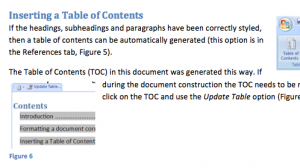Note for current students: remember that the paper last year had a different structure, the points here are still valid for this years paper.
Revision for the resit exam
The majority of students resiting this module will take a exam. This will be in the same style as the original paper, with two sections, where you have to answer all the questions in part one, and two from the four available in part two.
As with the original paper, you should attempt the revision pack which contains questions which have been carefully selected to represent the content and style of material that may occur. Dan and I will have variable attendance over the summer, so the best way to get a response is to email us your answers as a word document, which we will then comment on and email back.
Feedback on the scripts
Comments here are on the paper that was sat in May/June and are not a guarantee that similar questions will occur in the resit.
Short answer questions
It was surprising how many students couldn’t read a form correctly to write a response page in PHP. This was done many times in semester one, in the coursework and in many of the sample questions in the revision pack. You need to read the form and look at the post/get attribute, then have a collection of lines that extract the values. These should then be printed out. Sometimes these questions require If/switch statements, to catch cancel buttons or to transform the output before printing. A more complex form question is a form that checks itself for inputs in each field – there is an example of this in the revision pack.
Database style questions require you to know how to use the MySQL interaction functions. It’s not particularly difficult to memorise this as there are only 4/5, but if the question requires multiple outputs, then the loop structure is important. This is in the notes, exercises and in the revision pack. We don’t expect students to remember the names of the functions in the exam as they are normally supplied. You do need to know how to use them.
Many students couldn’t articulate the basics of what an object/class/abstraction is and the bare bones of how to express this in PHP. You should take a class description of a thing (for example a Person) and know how to write it out in PHP. Make sure you can explain what each line does.
Dan covered the basic types of diagrams in UML – for example class and state diagrams. Many students failed to draw these correctly (it is important that they use the correct shapes, lines and arrows). You should have a couple of examples of these in your head that you can reproduce and explain. Being able to do this may also help in part b.
Long answer questions
Some students only attempted one long answer question which makes passing the exam very difficult. Remember that the first 10 marks of a question will probably be easier than the last 10 marks, so it’s always worthwhile having a go, even if it’s just an attempt at defining the terms in the question.
It’s difficult to say how long an answer should be, but we would normally expect an answer to be 2/3 sides in the exam booklet. If it’s the kind of question that allows you to draw a picture (or many pictures) then draw them down the page and write explanations next to them. This should help structure your answer.
Questions in part (b) could be on areas such as
The use of sessions
Using functions to help structure PHP
Defining or explaining the use of objects in PHP
Defining or explaining object-oriented design principles
There are many examples of the types of questions that you could see in the pack.
The most common missing component in answers came from missing examples (where the question asked for it). You be able to reproduce some small examples in PHP and be able to explain how it works.

